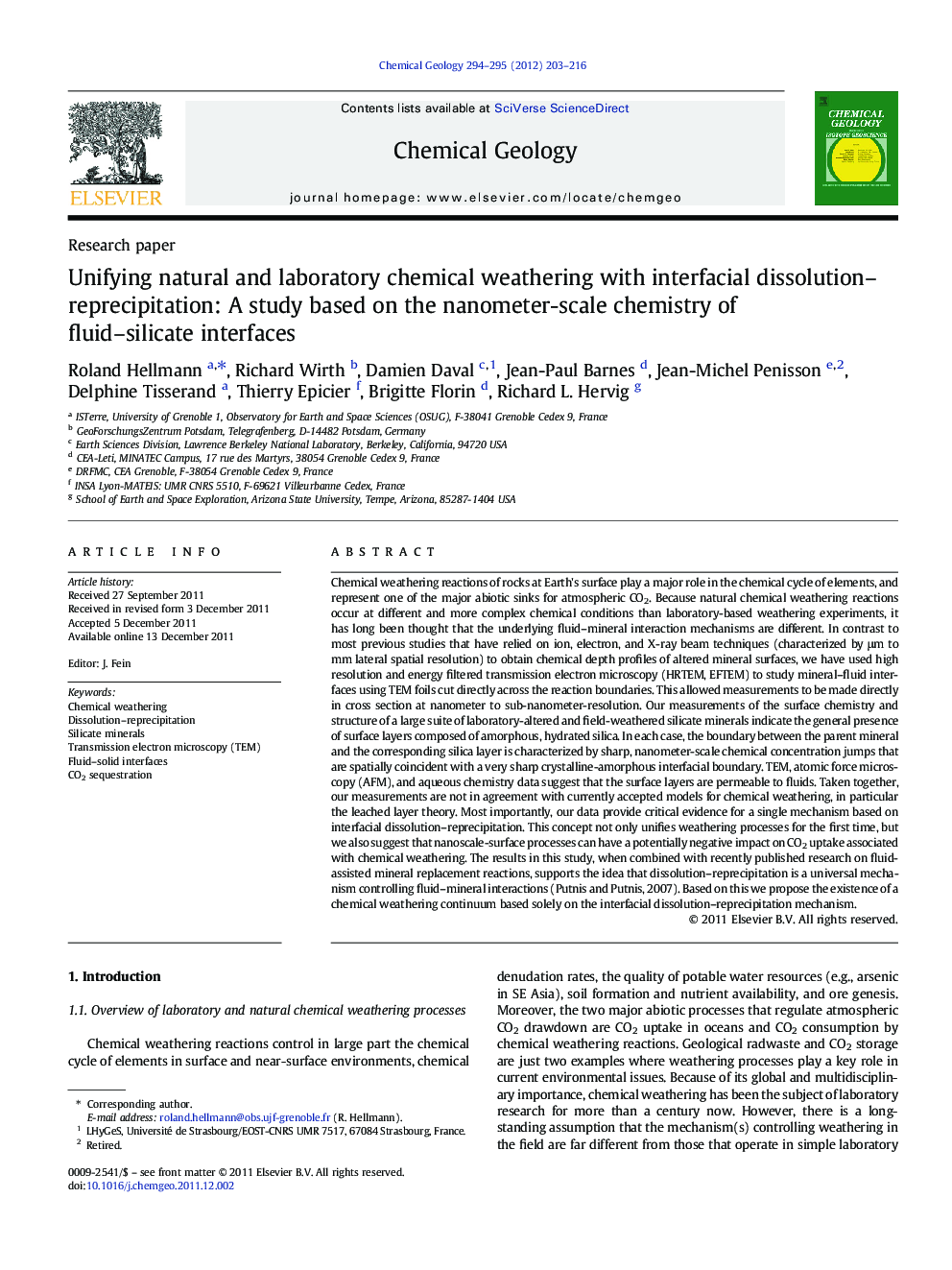| کد مقاله | کد نشریه | سال انتشار | مقاله انگلیسی | نسخه تمام متن |
|---|---|---|---|---|
| 4699512 | 1637653 | 2012 | 14 صفحه PDF | دانلود رایگان |

Chemical weathering reactions of rocks at Earth's surface play a major role in the chemical cycle of elements, and represent one of the major abiotic sinks for atmospheric CO2. Because natural chemical weathering reactions occur at different and more complex chemical conditions than laboratory-based weathering experiments, it has long been thought that the underlying fluid–mineral interaction mechanisms are different. In contrast to most previous studies that have relied on ion, electron, and X-ray beam techniques (characterized by μm to mm lateral spatial resolution) to obtain chemical depth profiles of altered mineral surfaces, we have used high resolution and energy filtered transmission electron microscopy (HRTEM, EFTEM) to study mineral–fluid interfaces using TEM foils cut directly across the reaction boundaries. This allowed measurements to be made directly in cross section at nanometer to sub-nanometer-resolution. Our measurements of the surface chemistry and structure of a large suite of laboratory-altered and field-weathered silicate minerals indicate the general presence of surface layers composed of amorphous, hydrated silica. In each case, the boundary between the parent mineral and the corresponding silica layer is characterized by sharp, nanometer-scale chemical concentration jumps that are spatially coincident with a very sharp crystalline-amorphous interfacial boundary. TEM, atomic force microscopy (AFM), and aqueous chemistry data suggest that the surface layers are permeable to fluids. Taken together, our measurements are not in agreement with currently accepted models for chemical weathering, in particular the leached layer theory. Most importantly, our data provide critical evidence for a single mechanism based on interfacial dissolution–reprecipitation. This concept not only unifies weathering processes for the first time, but we also suggest that nanoscale-surface processes can have a potentially negative impact on CO2 uptake associated with chemical weathering. The results in this study, when combined with recently published research on fluid-assisted mineral replacement reactions, supports the idea that dissolution–reprecipitation is a universal mechanism controlling fluid–mineral interactions (Putnis and Putnis, 2007). Based on this we propose the existence of a chemical weathering continuum based solely on the interfacial dissolution–reprecipitation mechanism.
► Nanoscale chemistry of weathered mineral surfaces shows presence of amorphous silica.
► Nm-scale cation conc. jumps coincide with sharp crystalline-amorphous boundaries.
► Chemical and structural gradients indicate interfacial dissolution–reprecipitation.
► This mechanism serves to unify laboratory and natural weathering processes.
► We propose a weathering continuum based on interfacial dissolution–reprecipitation.
Journal: Chemical Geology - Volumes 294–295, 10 February 2012, Pages 203–216